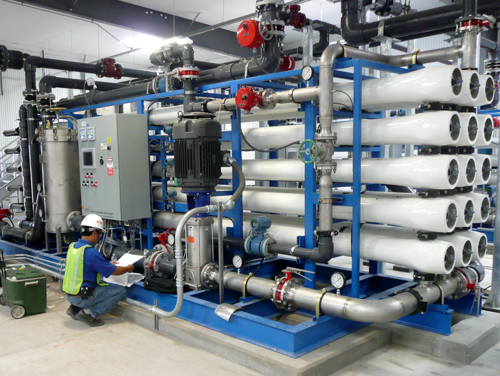Innovative PFAS Treatment Solutions for Safer Water
The enhancing prevalence of PFAS contamination in water products necessitates a vital exam of innovative therapy remedies. Advanced filtration innovations and unique chemical treatments present encouraging methods for reducing these persistent contaminants. In addition, emerging bioremediation methods supply a more lasting technique to dealing with PFAS challenges. As governing frameworks remain to adapt, recognizing the efficiency and scalability of these remedies comes to be vital. What effects do these improvements hold for public health and wellness and ecological restoration, and how can stakeholders successfully execute them in diverse contexts?
Introduction of PFAS Contamination
PFAS contamination has become a substantial ecological and public health and wellness issue. Per- and polyfluoroalkyl materials (PFAS) are a team of artificial chemicals known for their determination in the setting and body, leading them to be commonly referred to as "for life chemicals." These compounds have been extensively used in various industries, consisting of firefighting foams, water-repellent materials, and food product packaging, primarily because of their water- and grease-resistant properties.
The prevalent use of PFAS has caused their detection in soil, water supplies, and also in the blood of humans and pets. Research studies have actually linked PFAS exposure to countless health and wellness problems, including developing effects in infants, body immune system disorder, and various kinds of cancer. In addition, the environmental perseverance of these compounds complicates their deterioration and removal, elevating problems regarding lasting environmental influences.
Regulatory bodies are increasingly carrying out rigid standards to keep track of and minimize PFAS degrees in drinking water and other ecological tools. As recognition of PFAS contamination expands, it has come to be vital for areas and markets to seek efficient therapy solutions to reduce direct exposure and guard public wellness.
Advanced Purification Technologies
As the urgency to attend to PFAS contamination increases, advanced purification innovations have actually become a pivotal part in the removal initiatives focused on removing these persistent chemicals from water sources. These innovations take advantage of sophisticated devices to successfully target and capture PFAS substances, which are infamously resistant to standard treatment approaches.
One of one of the most appealing approaches is the usage of granular turned on carbon (GAC), which adsorbs PFAS particles due to its high area and porous framework. This approach has actually been commonly implemented in both metropolitan and industrial setups, showing considerable reductions in PFAS concentrations. Additionally, ion exchange materials have actually gained grip, specifically developed to selectively bind PFAS ions from water, thus facilitating their elimination.
Membrane filtration technologies, such as reverse osmosis and nanofiltration, likewise reveal effectiveness in PFAS removal by physically separating pollutants from water - pfas management. These systems can accomplish high degrees of pureness, making them ideal for alcohol consumption water applications
Chemical Therapy Innovations
Numerous chemical treatment innovations are being explored to efficiently resolve PFAS contamination in water products. One encouraging approach entails the use of innovative oxidation processes (AOPs), which utilize effective oxidants such as ozone, hydrogen peroxide, or chlorine dioxide combined with UV light to damage down PFAS compounds right into much less dangerous materials. This technique has shown efficacy in research laboratory setups, revealing possible for scalability in real-world applications.
An additional ingenious method is the growth of ion-exchange materials particularly made to target PFAS. These materials can precisely adsorb PFAS compounds from water, permitting their elimination during treatment processes. Recent advancements have improved the efficiency and ability of these resins, making them a beneficial choice for water treatment centers.
Additionally, scientists are investigating using chemical representatives like persulfate and ferrous ions to enhance the destruction of PFAS in polluted water. These agents can generate chemical reactions that promote the break down of persistent PFAS compounds.
Emerging Bioremediation Strategies
Recent improvements in chemical treatment developments have led the way for discovering bioremediation strategies as a practical option for attending to PFAS contamination. Bioremediation uses the all-natural metabolic processes of bacteria to weaken or change contaminants, making it an appealing method for tackling consistent contaminants like PFAS.
Emerging techniques in bioremediation include making use of genetically crafted bacteria that can particularly target and break down PFAS substances. These microbial stress are being established for their enhanced deterioration capabilities, boosting the efficiency of the click to read more remediation procedure. In addition, scientists are examining the possibility of plant-assisted bioremediation, where certain plant varieties might uptake and sequester PFAS from contaminated dirt and water.
Another encouraging technique is the application of bioaugmentation, which includes presenting valuable bacteria right into infected atmospheres to enhance the destruction of PFAS. This method can promote faster remediation timelines and enhance overall effectiveness.

Governing Frameworks and Requirements
A comprehensive regulative framework is important for efficiently managing PFAS contamination and making certain public health protection. The raising recognition of per- and polyfluoroalkyl substances (PFAS) as toxic wastes has actually triggered different government and state firms to develop criteria that regulate their existence in water materials. The United State Epa (EPA) has established health advisories and is functioning towards setting enforceable restrictions for PFAS in alcohol consumption water.
State-level guidelines vary considerably, with some states embracing stricter standards than those recommended by the EPA. These policies often consist of optimum contaminant degrees (MCLs) for particular PFAS substances, surveillance requirements, and reporting commitments for water energies. Furthermore, arising frameworks focus on the remediation of polluted websites, highlighting the demand for effective therapy innovations.

Verdict
Finally, the advancement and execution of innovative PFAS treatment options are vital for addressing the pervasive concern of water contamination. visit here Advanced filtration innovations, chemical treatments, and emerging bioremediation strategies collectively present a diverse technique to effectively lower and weaken PFAS levels. As regulatory frameworks continue to advance, integrating these technologies will be necessary to secure public health and wellness and restore the integrity of infected water sources, inevitably adding to a cleaner and more secure setting.